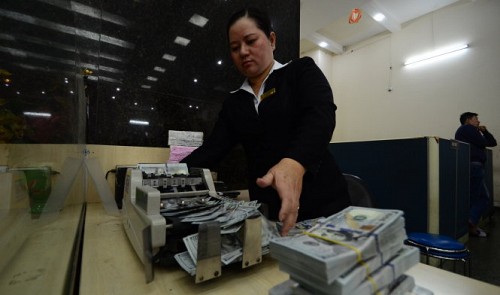Vietnam Jan-Apr trade deficit nearly $1bn smaller than estimates, but experts unhappy
Vietnam Jan-Apr trade deficit nearly $1bn smaller than estimates, but experts unhappy
The General Statistics Office (GSO) and Vietnam Customs do not seem to see eye to eye when it comes to calculating the country’s balance of trade, as there is an almost US$1 billion disparity between their statistical data.

The GSO announced on its website on April 28 that Vietnam’s trade deficit in the January – April period is estimated at $3 billion, with exports standing at $50.1 billion against $53.1 billion worth of imports.
The office also provided a detailed report, saying imports of many commodities, including automobiles and machinery and equipment, have soared in the first four months of the year, contributing to the huge trade deficit.
On Thursday, the Vietnam Customs released its own report, pointing out that the trade deficit is only $2.07 billion, nearly 45 percent lower than the GSO estimate.
Le Thi Minh Thuy, head of the GSO department in charge of trade and service statistics, said her office always releases three kinds of data, namely estimated, preliminary and official, apparently implying that a disparity is not abnormal.
She also noted that the time of calculation also matters.
“The GSO has to work on the monthly estimates in the middle, rather than at the end, of a month,” she told Tuoi Tre (Youth) newspaper.
“For instance, we had to present the statistical data for April at the government’s regular meeting on April 25, so the calculation was made using statistics recorded only in the first half of that month.”
Similarly, the GSO made the Jan-Apr trade deficit estimates when April had yet to end. The data of the Vietnam Customs, meanwhile, was compiled when statistics for the entire month of April were available, she added.
Thuy also revealed that the trade balance estimates are made based on around 40 groups of commodities, accounting for around 80 percent of the total export-import turnover, as it is impossible to take into account “thousands of imported and exported commodities.”
“Measurement uncertainty is thus inevitable,” Thuy said.
Negative impact
A disparity of almost $1 billion between estimates and the real data has caused some negative impacts, especially on the VND-USD exchange rates, experts say.
A finance expert said he is surprised to see the statistical difference, adding that statistics should be accurate at a time of forex rate volatility and a strengthened U.S. dollar.
“The reported $3 billion trade deficit is a psychological factor that possibly affected the forex rate as it indicates that Vietnam would need a great demand of U.S. dollars to make up for the deficit,” he elaborated.
Nguyen Hoang Hai, deputy chairman of the Vietnam Association of Financial Investors, also said the false estimates have affected the psychology of the public.
Hai acknowledges there will always be disparity between estimated and official data.
“But the GSO should try to deploy many calculation methods and take reference from more sources of data,” he said.
“The State Bank of Vietnam should also make public other information such as balance of payment or remittance inflow to prevent the psychological factor from affecting the forex rate.”




















